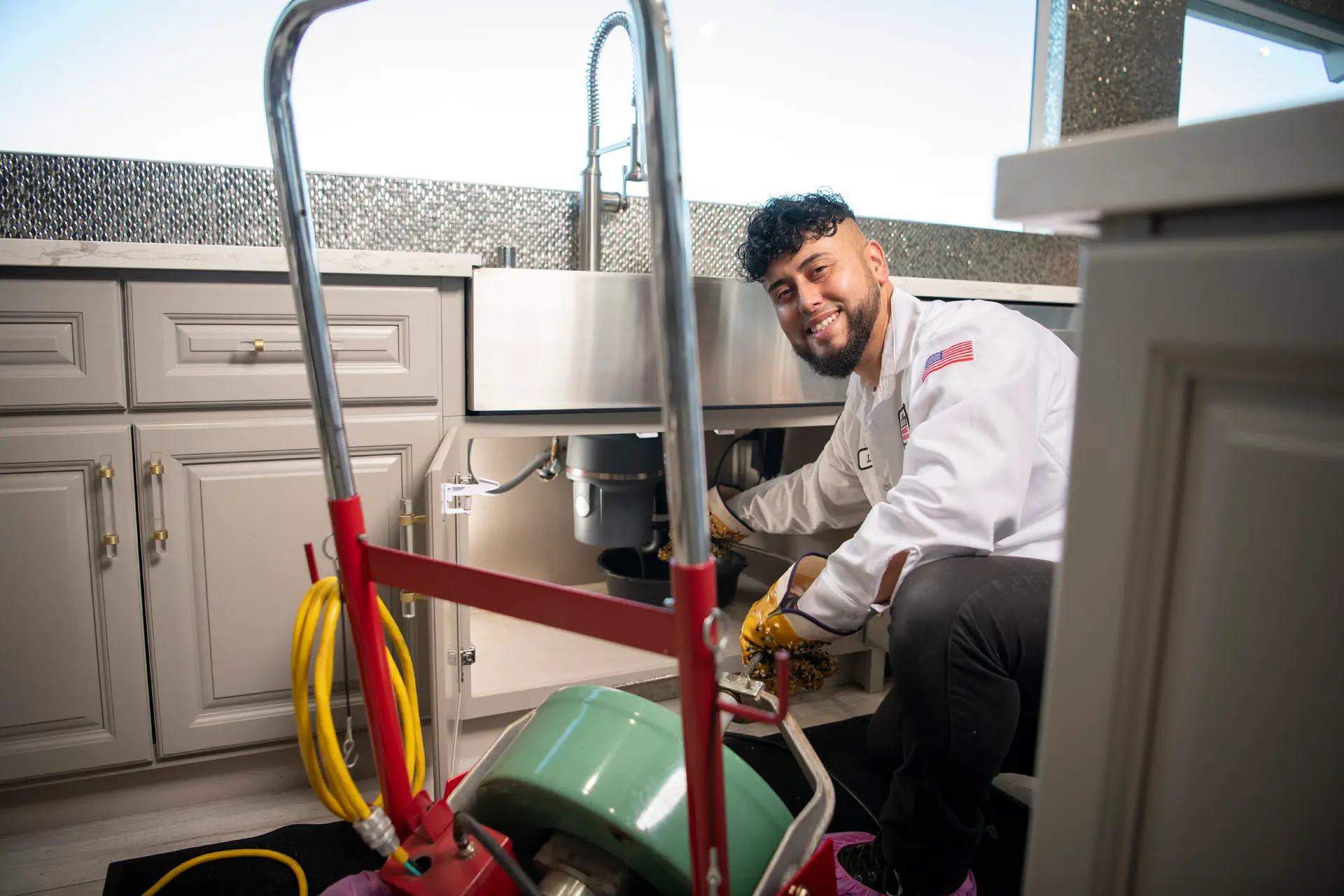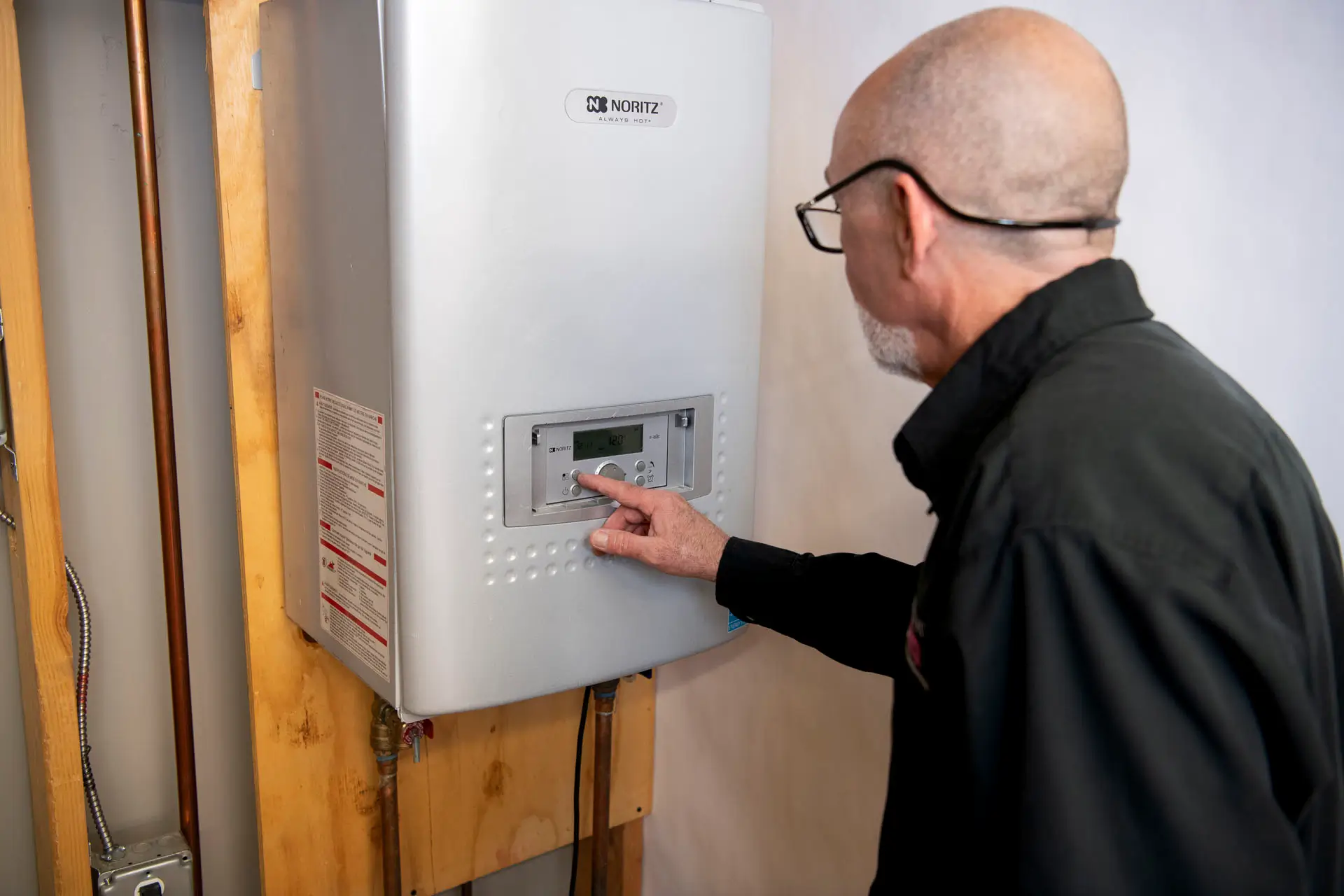
Blog
Water Heater Flush 101: How to Drain Sediment and Keep Your System Running Strong

If your hot water doesn’t last like it used to or you hear a popping sound from the tank, there’s a good chance sediment has built up inside. That buildup is common in San Diego County, where hard water leaves minerals behind over time. The good news? A simple flush can usually fix it.
Flushing your water heater is something most homeowners can do on their own with a little patience. It helps your system heat faster, use less energy, and last years longer.
Why Flushing Your Water Heater Matters
Every water heater collects sediment. It settles at the bottom of the tank and keeps the burner or heating element from working like it should. The more it builds up, the harder your system has to work. That means higher bills and a shorter lifespan.
Regular flushing helps:
- Improve heating efficiency
- Keep water hotter for longer
- Reduce popping or rumbling noises
- Lower energy costs
- Extend the life of your water heater
A yearly flush is usually enough to keep your system in good shape.
The 3-Step DIY Water Heater Flush Guide
You don’t need fancy tools to flush your water heater, just a little time and the right steps.
1. Shutting Off the Power and Gas Supply
Safety comes first. Turn off the power at the breaker if you have an electric heater. If it’s gas, switch the thermostat to “pilot” or turn the gas valve off completely.
Next, close the cold water valve at the top of the tank. Let the tank sit for about 30 minutes so the water can cool. That way, you won’t risk getting burned.
2. Draining the Tank
Grab a garden hose and attach it to the drain valve near the bottom of the tank. Run the other end outside or into a floor drain. Open the valve and let the water flow out.
You might see cloudy or rusty water at first, that’s the sediment leaving the tank. To help it drain faster, open a nearby hot water tap to let air into the system.
3. Flushing and Refilling the Tank
Once the tank is empty, turn the cold water back on for a few minutes. This final flush clears out anything left inside. When the water runs clear, close the drain valve, remove the hose, and let the tank fill up again.
When it’s full, turn the power or gas back on and give the water about 30 minutes to heat up. Then check your faucets to make sure everything’s flowing normally.
That’s it. You just flushed your water heater.
When to Skip DIY and Call the Pros at Anderson
Most homeowners can do a basic flush without any trouble. But sometimes it’s better to let a professional handle it. Here’s when to call for help:
Sediment That Won’t Flush
If the tank drains slowly or the water still looks dirty after multiple tries, the sediment may be hardened. That usually means it’s been sitting too long. Our plumbers can break it up safely and make sure the tank isn’t damaged.
Checking Safety Valves and Pressure
The pressure relief valve and thermostat keep your tank safe. If you’re not sure how to check them, don’t risk it. These parts need to work properly to prevent leaks or bursts. A plumber can test them during a professional tune-up.
Professional Water Heater Maintenance in San Diego County
At Anderson Plumbing, Heating & Air, we help homeowners across San Diego County keep their water heaters working like new. Our technicians handle both standard and tankless systems and perform full inspections, flushes, and safety checks.
- Backed by thousands of 5-star reviews
- Covered by the Anderson Guarantee on every service
- AMP Membership available for routine maintenance and savings
- Financing options for larger repairs or replacements
We serve homes from Carlsbad and Oceanside to San Marcos, Escondido, and El Cajon, helping local families stay comfortable year-round.
Schedule Online (760) 276-5817
Frequently Asked Questions
Once a year is best for most homes in San Diego County. Hard water can cause faster buildup, so some systems may need it more often.
Sediment will harden at the bottom, forcing your system to use more energy. Eventually, it can overheat or start leaking.
Not the same way. Tankless units need a descaling flush using vinegar or a cleaning solution. It’s best done by a plumber.
Usually about an hour, including a full system check.





